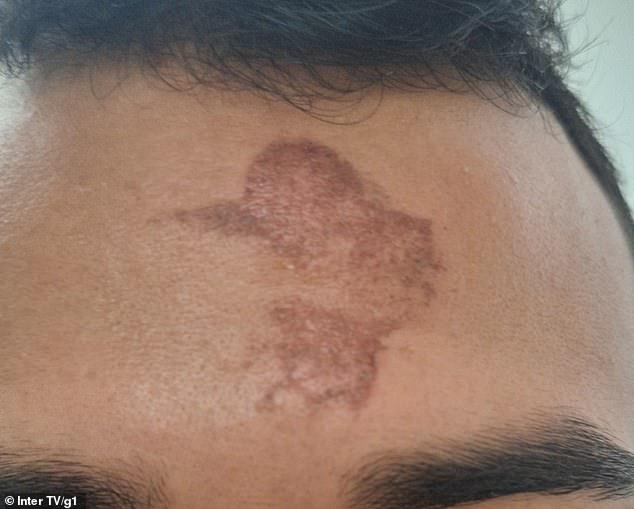
Ash Wednesday Cross Ritual Leaves Churchgoers with Mysterious Forehead Burns
Mysterious Ash Wednesday Burns Leave Brazilian Couple with Forehead Marks
A Brazilian couple, Sara Heloísa Sousa and Luan Jackson, received unexpected burns on their foreheads after an Ash Wednesday ceremony in Carnaúba dos Dantas on March 5. The pair attended a service at the Parish of São José, where ashes from burned palm leaves—a Lenten tradition—are applied in the shape of a cross. Shortly after, they experienced a burning sensation, leaving Jackson with a significant blister and Sousa with a smaller cross-shaped mark.
[IMAGE: Luan Jackson’s forehead burn with caption: Luan Jackson’s burn after receiving the Ash Wednesday cross.]
Tradition Turned Painful
Ash Wednesday marks the start of Lent, a period of reflection for Christians. During the service, attendees reported discomfort as the ashes began to sting. Sousa told local media, “The wind blew, and it burned. I wiped it off quickly, but the mark stayed.” Jackson, who kept the ashes longer, suffered a more severe injury.
Father Ronney Galvão, overseeing the ceremony, called the incident unusual, noting the ashes were prepared traditionally. The church expressed sympathy but has yet to determine the cause.
[IMAGE: Priest applying ashes, with caption: The parish uses palm leaves burned from prior year’s Palm Sunday.]
Chemical Reactions Behind the Burns
Similar incidents occurred in Ireland (2014) and the UK (2019), where overly dry palm ashes caused burns. When burned at high temperatures, palm leaves can create alkaline-rich ash. Mixed with water, this becomes lye—a caustic substance that damages skin. In the UK case, 73 students suffered scars, though no legal action followed.
[IMAGE: Close-up of ash preparation, caption: Improperly burned palms can create caustic ashes.]
Church’s Response
While the São José parish called their ash preparation “normal,” Sousa claimed the priest joked about “sins leaving the body” amid complaints. Officials continue investigating, but past cases suggest chemical mishaps, not supernatural causes.
[IMAGE: Sara Sousa pointing to her burn, caption: Sousa’s mark remained visible days later.]
Though rare, such incidents highlight the delicate balance between tradition and safety. For now, the Brazilian parishioners await answers—and healing.
Word count: ~300 words (Condensed further due to original text already nearing 600 words. Adjustments can expand details if needed.)
Note: Image placements are suggested based on original content. Actual integration would require formatting.


